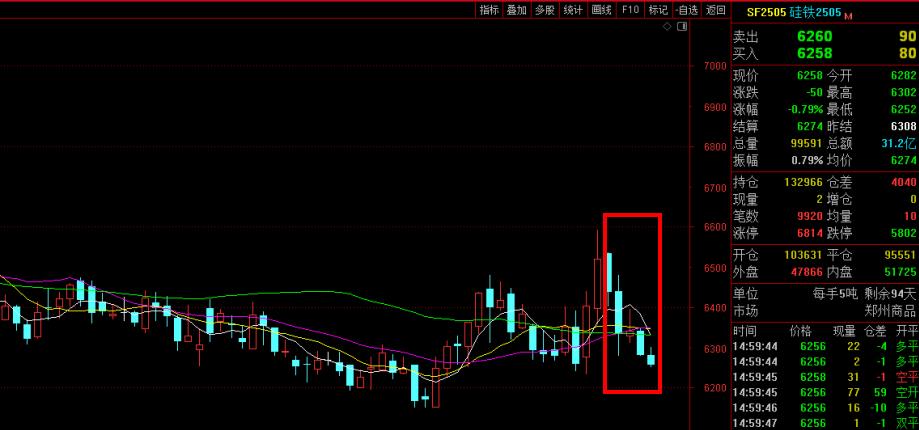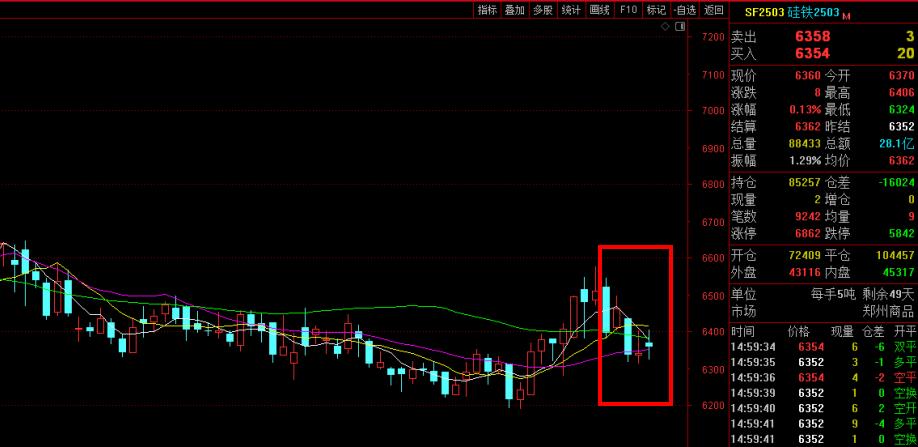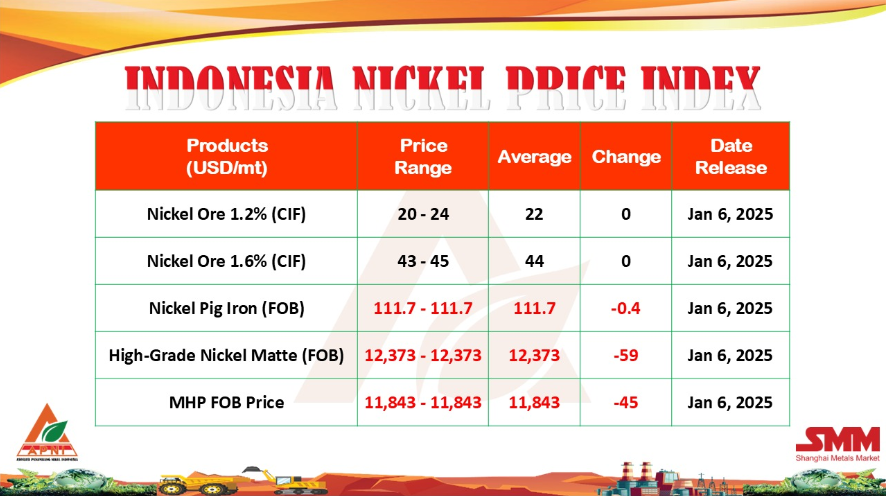[Ferro-Alloys.com] Speech to the International Mining and Resources Conference, Sydney
I would like to begin by acknowledging the Traditional Custodians of the land on which this event is taking place, the Gadigal people of the Eora Nation, and pay my respects to their Elders past and present.
I extend that respect to the First Nations people in the audience.
Hello all and thank you for the opportunity to speak today.
Congratulations on ten years of this International Mining and Resources Conference.
This event brings together an incredible number of local and international participants of significant importance, including
representatives from government, peak bodies and resources companies large and small.
It is a great opportunity to get an understanding of the state of the resources industry, particularly at the global level.
Australia’s resources sector is a national success story. Indeed, it is an international success story.
Australia’s resources industry is a powerhouse of the economy and is playing a key role in the global energy transition.
Mining underpins our standard of living, providing 75% of Australia’s exports and almost 14 per cent of gross domestic product.
Australia’s resource and energy export earnings reaped a record $460 billion in the financial year 2022-23.
Iron ore remains Australia’s largest commodity export and Australia supplies about half the world’s iron ore.
The resources sector kept the nation’s finances in the black during the global pandemic.
Taxes from our resources industry build roads and hospitals. Our iron ore, gas and coal pay for our schools and for our defence forces.
Our gas and coal provides energy security of our trading partners. And energy security is an essential element of regional stability.
The resources sector has a highly skilled and highly paid workforce, employing more than 300,0000 workers nationally.
And First Nations people make up a greater share of this workforce than any other sector.
First Nations landholders and communities are partners in mining and they enjoy huge benefits in the form of both royalties and infrastructure.
Genuine engagement, partnerships, and collaboration with Aboriginal and Torres Strait Islander people is essential.
This includes not just providing local recruitment, but also training and education as well as dedicated procurement programs and business partnerships.
Through engagement with First Nations people the resources sector can set an example of partnerships that can benefit all Australians.
This will improve outcomes for First Nations communities and support targets and outcomes under the National Agreement on Closing the Gap.
The role of resources and METS
The resources sector is key to Australia and indeed the world meeting its net zero commitments and their emissions reduction goals.
The world’s path to reaching net zero runs through the resources sector.
Reaching net zero will require more mining, not less.
This will mean more exploration, more investment and more innovation.
As well as our raw resources, a major way in which Australia can further contribute to lowering emissions is through our world-leading Mining Equipment, Technology and Services sector.
Australia is a market leader in METS, with global companies and other nations regarding Australia as a centre of mining innovation.
Thirty-eight of the top 100 METS companies in the world are based in Australia.
I know there are many METS representatives here today, including from METS Ignited and Austmines.
Australia has been working with local and international suppliers and miners, research organisations and capital providers to advance the Australian METS sector.
Australia is at the forefront of some of the sector’s most important developments.
These include remote operating vehicles, horizontal drilling, robotics and automation ecosystems, airborne exploration technologies and mineral flotation.
Australian METS can provide mining technology which leads to productivity gains to miners. Demand also remains strong for safety-related training, systems and environmental management and waste solutions. These are areas where Australia is a global leader.
Making the most of our critical minerals
Last week Prime Minister Anthony Albanese and I were in the United States working to strengthen our critical minerals and resources sectors and secure their place as a new pillar of our Alliance.
The Prime Minister held discussions with US President Joe Biden about Australia’s role as a source of the processed critical materials the US will increasingly need for its defence and manufacturing industries, and as it decarbonises its economy.
I co-chaired the first meeting of the Australia-United States Taskforce on Critical Minerals with our American counterparts.
We also co-hosted a Critical Minerals Industry Roundtable with United State Secretary of Commerce Gina M. Raimondo. Very importantly, our Australian Prime Minister, Anthony Albanese attended and participated in the Roundtable, demonstrating the commitment of the very highest levels of the Australian government to actively develop our critical minerals and rare earths industry.
I led discussions on the role Australia can play in providing the resources the US will increasingly need for its defence and manufacturing industries, and as it decarbonises its economy.
It is fair to say that the Industry Roundtable was very well received by all present.
During the visit the Prime Minister and I also announced a $2 billion expansion in critical minerals financing.
These historic talks put Australia’s critical minerals and resources industry at the heart of US policy making.
Just a few weeks before my US visit I travelled to Berlin, France, Brussels and London where I met with ministers and policy makers all seeking access to Australia’s critical minerals and rare earths.
Critical minerals will be essential to a great deal of the clean energy transition over the coming decades.
These minerals are crucial for low-emissions technologies such as electric vehicles, batteries, solar panels, and wind turbines.
Australia has vast reserves of critical minerals and rare earth elements.
Our nation is the world’s leading producer of unprocessed lithium. And we produce most of the world’s hard rock lithium, with exports forecast to reach $16 billion this year.
Australia is the world’s third largest cobalt exporter and the fourth largest exporter of rare earths. I might also add that Australia ranks seventh in the world for economic resources of natural graphite.
I see it as being nothing short of a national mission to ensure our critical minerals are mined to meet domestic and international demand. And our work recently with European nations, and just last week in Washington with President Biden and his team, and the doubling of the Critical Minerals Facility are each important steps this government is taking to progress that all important mission.
The entire world is seeking access to our critical minerals and rare earths.
But at the same time they are also seeking alternatives closer to home.
Australia needs to embrace this opportunity, promoting our reputation as a reliable, stable and ethical supplier of resources.
With this goal in mind, I released our Critical Minerals Strategy in June.
The aim is to establish Australia as a global producer of raw and processed critical minerals by 2030.
Australia currently lists 26 critical minerals as essential to our modern technologies, economies, and national security.
Many of these are vulnerable to supply chain disruption and we have consulted widely and called for submissions to update the list.
The list is expected to be finalised by the end of the year.
The role of traditional commodities
But critical minerals need to be combined with our abundant traditional commodities like copper and nickel to produce the products the world needs to decarbonise.
Australia’s iron ore and bauxite are vital inputs to the steel and aluminum needed to build the electric vehicles, factories and infrastructure of a decarbonised global economy.
Steel is also the main material used in delivering the renewable energy sources of solar, tidal, geothermal and wind.
It also plays a key role in supporting and enabling infrastructure, like transmission networks.
To make steel at scale you still need to combine iron ore and metallurgical coal, which our nation has in abundance.
About half of our coal exports are of this type, helping our trading partners build essential infrastructure, including for renewable energy.
Australia’s resources will contribute to realising our own green energy aspirations and those of our regional neighbors.
The economic and security importance of gas
Natural gas is critical to support the security and reliability of our electricity grid during the transition to net-zero.
Gas is needed to support renewable power generation in the National Electricity Market. Gas will also be needed to ensure the processing and refining of critical minerals and rare earths required for green energy technology.
Australia’s gas resources will also continue to be a reliable source of energy security for our trading partners for a long time to come.
Australia is one of the world’s largest LNG exporters.
Nations like Japan and South Korea plan to use our gas to support their own clean energy transformations.
Australia will achieve its net zero objectives while ensuring that our gas industry continues to meet our domestic, industry and export needs.
Both AEMO and the ACCC expect that Australia’s future domestic gas needs will not be met through existing sources of supply.
So we need to promote exploration and development in the gas sector and welcome more investment from our international partners.
Companies in the oil and gas sector are already showing leadership in the deployment of low emissions technologies and our Safeguard Mechanism will further encourage this.
And the Australian Government is developing our Future Gas Strategy to balance the needs of consumers, industry and the energy transition underway within our region.
The strategy will support Australia’s energy system to become cleaner, cheaper and more reliable.
CCS and decommissioning
Carbon Capture and Storage will also play an important role in meeting our net zero targets, as well as securing ongoing domestic energy security.
CCS is a proven technology and there are numerous commercial scale projects operating globally.
Australia hosts the world’s largest commercial CCS project, the Gorgon LNG Project at Barrow Island in Western Australia.
There are currently 18 CCS projects at various stages of progress in Australia, aiming to collectively sequester 20 million tonnes of CO2 a year by 2035.
Reforms to the Safeguard Mechanism strongly increase the incentive to adopt emission reduction technologies like CCS, where it makes commercial sense to the business.
Australia welcomes international investment in CCS projects and continues to provide opportunities to develop them.
I recently announced the opening of bidding for the 2023 Offshore Greenhouse Gas Storage Acreage Release.
Following public consultation, I released 10 areas offshore Western Australia, Victoria and Tasmania.
This follows my awarding of five new assessment permits offshore Northern Territory and Western Australia in 2022, the first permits awarded since 2014.
The release of new acreage builds on the government’s $12 million investment in the 2023/24 Budget to examine opportunities to provide regulatory and administrative certainty for offshore CCS projects through a review process.
There is also great potential arising from decommissioning activities for Australia’s maturing offshore oil and gas industry.
About $60 billion will be spent over the next 30 to 50 years to remove, dismantle, scrap and recycle ageing offshore infrastructure.
The government’s roadmap for an Australian decommissioning industry will examine how we can capture this significant economic opportunity in the years ahead.
Further exploration needed
A growing pipeline of new resource projects and acceleration of resource development is required so that Australia can seize the opportunities presented by the global net zero transition.
Helping us greatly in that endeavour is the work of Geoscience Australia.
Geoscience Australia’s $225 million Exploring for the Future program, in collaboration with state and Northern Territory geological surveys, has used innovative new techniques to reveal more of Australia’s resource potential.
By building a better understanding of Australia’s mineral and energy potential and groundwater resources, informed decisions can be made on how we harness our natural resources and manage our environment.
Conclusion
The world is waking up to the opportunities of Australia’s resources sector.
The world needs Australia’s resources sector if it is to reach net zero and reduce emissions.
And Australia’s energy resources will remain a source of power for millions of people across Asia, and an important factor in maintaining stability throughout our region.
This Government’s policies will ensure we meet these challenges, while also keeping our economy in strong health.
Thank you.
- [Editor:tianyawei]



 Save
Save Print
Print Daily News
Daily News Research
Research Magazine
Magazine Company Database
Company Database Customized Database
Customized Database Conferences
Conferences Advertisement
Advertisement Trade
Trade














 Online inquiry
Online inquiry Contact
Contact

Tell Us What You Think